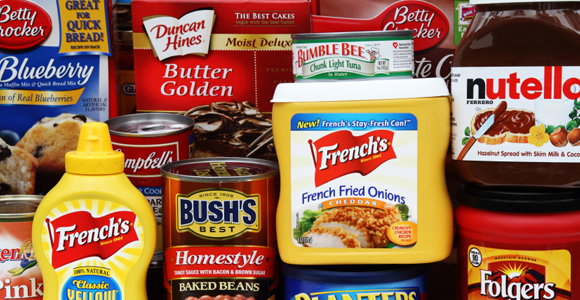Over the years, processed foods have transformed to meet our growing desires not only to be convenient and economical, but tasty. Food companies have discovered how to create certain tastes and textures for products that keep us coming back for more. But some experts say, we are eating, buying and weighing more because we are addicted.
Sugar + Fat + Salt
Growing research indicates highly-processed foods could leads to dependence, similar to that of addictive drugs. Three ingredients, in particular, commonly found in processed foods: sugar, fat and salt are under scrutiny for their addictive properties. While each of these ingredients does provide functional properties in foods, large amounts create "hyperpalatability" and could be problematic, as evidenced by animal and human studies.
According to the National Institutes of Drug Abuse (NIDA), hyperpalatable foods can satisfy the natural brain reward system, releasing the "feel-good" brain chemical, dopamine. Dopamine provides the brain with an overall feeling of reward, satisfaction and content.
Dr. Nora D. Volkow, NIDA Director states, "We are finding tremendous overlap between drugs in the brain and food in the brain." Low levels of dopamine receptors, either present initially or caused by repeated use, means more and more dopamine-inducing substances must be sought out to reach reward.
Functional and Addictive Properties
Sugar, fat and salt all contain various properties necessary to produce shelf stable convenience foods. Examples include stabilizing, tenderizing, enhancing some flavors while masking others, and reducing microbial activity. However, each of these ingredients also has addictive qualities.
In animal studies, rats regularly provided with large amounts of sugar demonstrated withdrawal behaviors once the sugar was restricted or removed. Fat was also observed to be highly regarded by rats. Studies showed that rats binged on fat, and dopamine was released in the brain, however withdrawal symptoms did not seem to be present as they were with sugar.
Lastly, salt. A team of Duke University Medical Center and Australian scientists found that gene patterns activated by salt appetite were the same group of genes regulated by cocaine or opiate addiction.
Hyperpalatable Foods Engineered
In the book Salt Sugar Fat: How the Food Giants Hooked Us, author Michael Moss explains that food companies are able to create the perfect recipe for their foods and beverages by rigorous research, where hundreds of formulations are tested on consumers in an effort to find the "bliss point." Moss quotes an Australian psychologist, Robert McBride, who said, "For all ingredients in food and drink, there is an optimum concentration at which the sensory pleasure is maximal. This optimum level is called the bliss point. The bliss point is a powerful phenomenon and dictates what we eat and drink more than we realize."
In an animal study conducted at the University of Florida College of Medicine, rats were monitored after given access to processed foods like cookies, cheese, chocolate chips and marshmallows. After several months, the rats became obese and had lower dopamine levels than rats fed typical lab chow. In another study, scientists fed rats foods like sausage, bacon and cheesecake. Scripps Research Associate Professor Paul J. Kenny noted, "In the study, the animals completely lost control over their eating behavior, the primary hallmark of addiction."
He went on to say, "These findings confirm what we and many others have suspected, that over-consumption of highly pleasurable food triggers addiction-like neuroadaptive responses in brain reward circuitries, driving the development of compulsive eating."
While animal studies are insightful, more research is needed in human subjects to get a clearer understanding of how these foods affect us. However, as we wait for further research, the obesity epidemic continues to grow. It is worth it to take a closer look now at the foods we are purchasing and how we are consuming them.
Mandy Seay is a bilingual registered and licensed dietitian who holds both a bachelor's degree in nutrition and in journalism. After gaining 30 pounds while living abroad, Mandy worked to lose the weight and regain her health. It was here that she discovered her passion for nutrition and went on to pursue a career as a dietitian. Mandy currently works as a nutrition consultant and freelance writer in Austin, Texas, where she specializes in diabetes, weight management and general and preventive nutrition. She recently published her first book, Your Best Health, a personalized program to losing weight and gaining a healthy lifestyle. Please visit Mandy's website at Nutritionistics.com.




